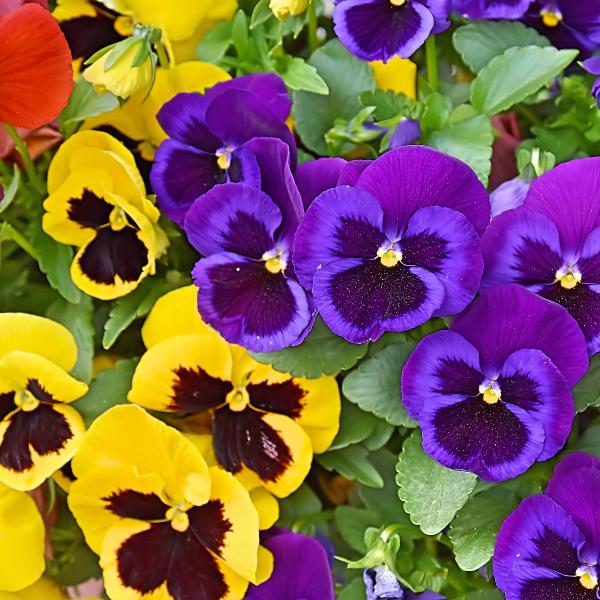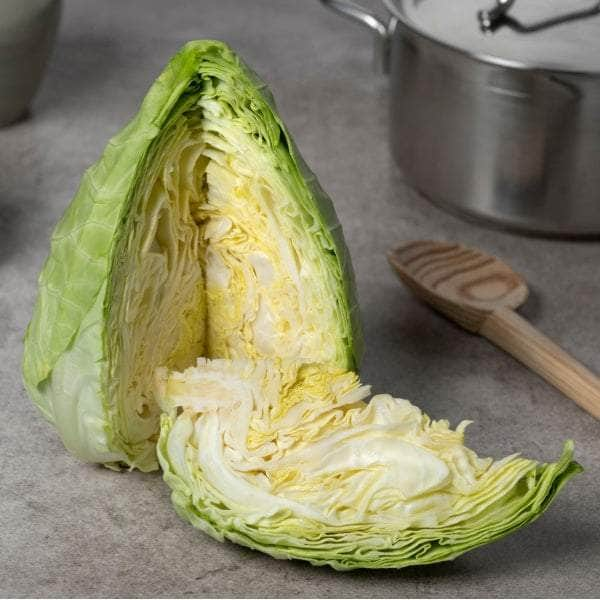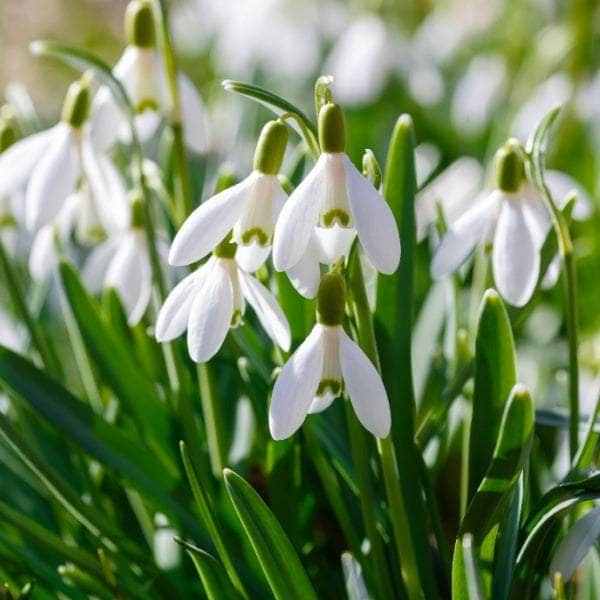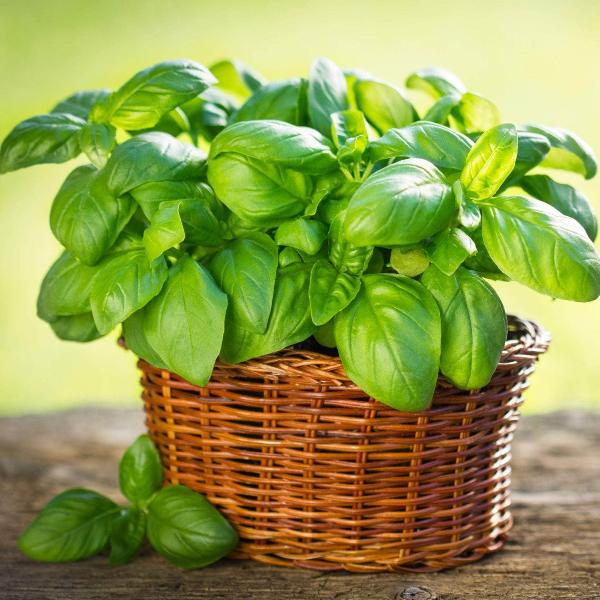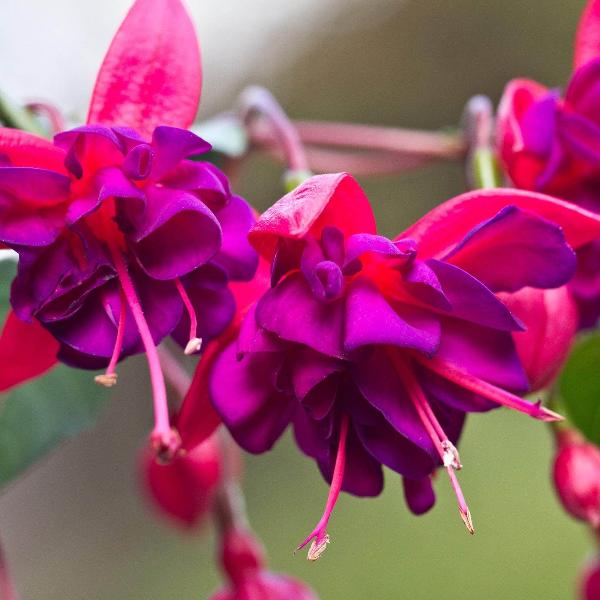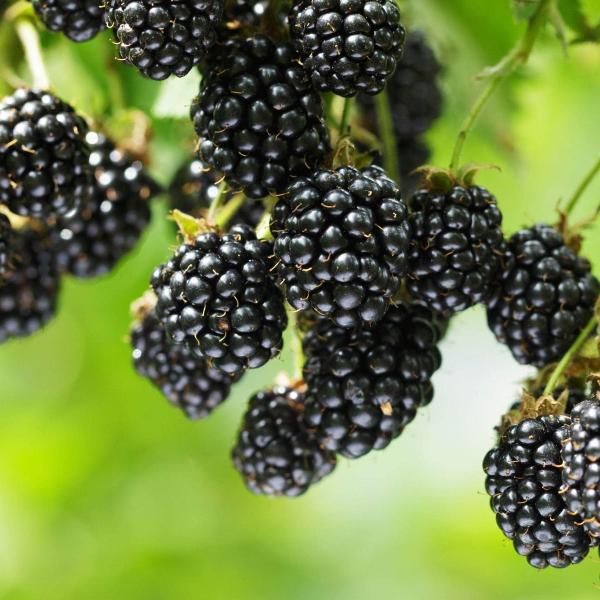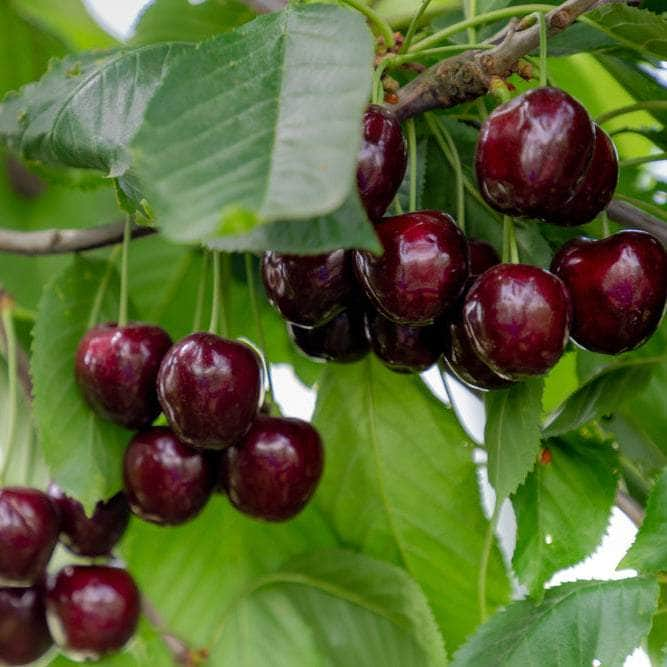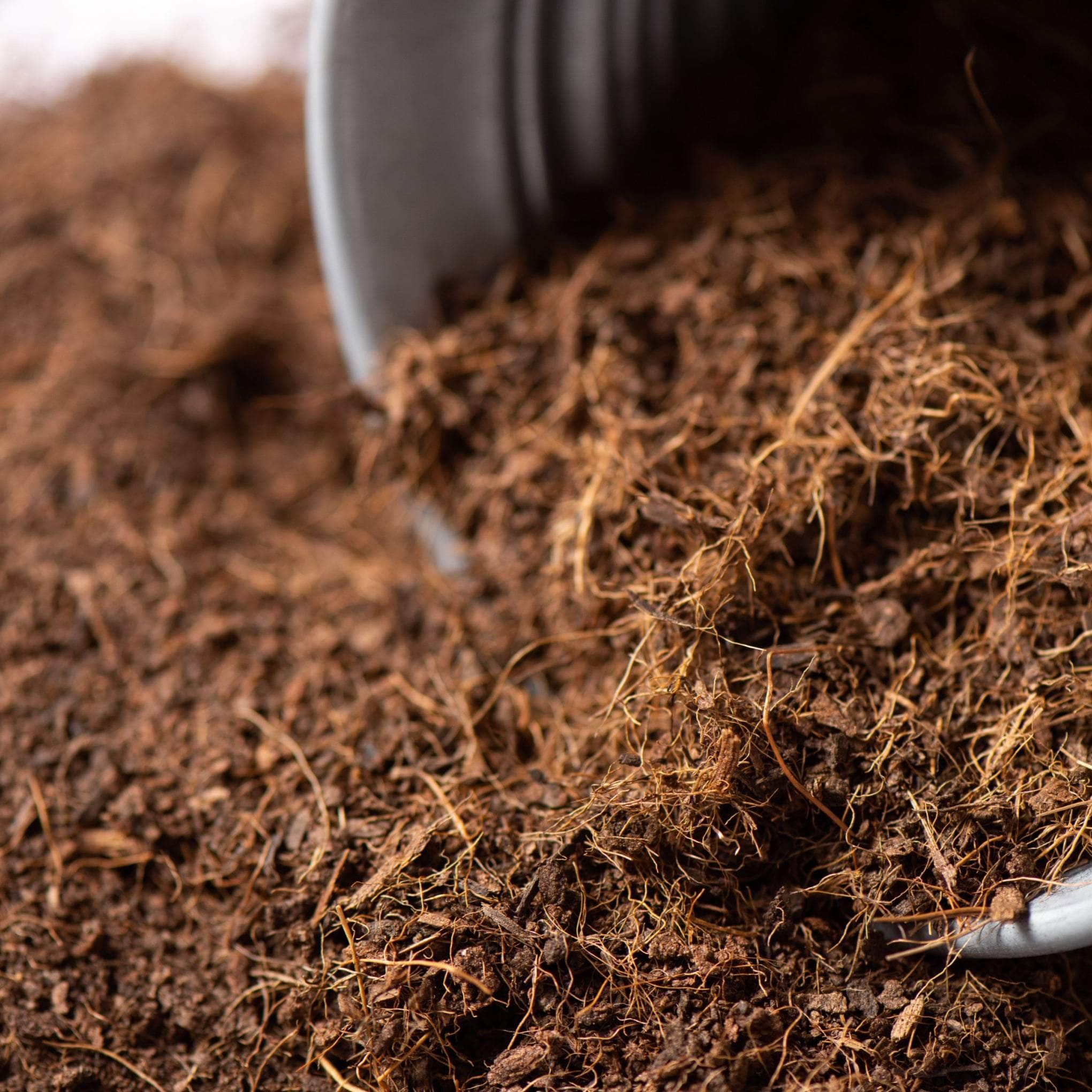The Comprehensive Guide to Growing Primulas

Welcome to our comprehensive guide on growing Primulas, a genus that boasts at least 500 species and an almost infinite number of hybrids and cultivars. If you're a gardener seeking to add a splash of colour to your early spring garden, the primrose plant, a common type of Primula, is a great choice.
With their low rosettes of dark green leaves and umbrels of vibrant flowers, they're a sight to behold in any garden.
In this guide, we'll delve into the world of Primulas, exploring their characteristics for identification, the best conditions for their growth, and how to tackle common pests and diseases. Whether you're a master gardener or a novice, we'll provide you with the knowledge to help your Primulas thrive, from planting to bloom.
So, if you're ready to transform your garden with the award-winning beauty of Primulas, read on.
From the common Primrose to the hybrid Primula Polyanthus 'Guinevere', we've got you covered. Let's embark on this gardening journey together, shall we?
Understanding Primulas

Primulas, with their vibrant hues and early blooms, are a gardener's delight. They are a diverse group of plants, with over 400 species, each with its unique charm. From the common primrose primula to the polyanthus guinevere primula, these plants offer a riot of colours and a variety of growth habits.
Understanding primulas is key to successfully growing them in your garden. Whether you're a seasoned gardener or a beginner, this guide will help you navigate the world of primulas, providing insights into their types, growth requirements, and care.
What is Primrose?
The common primrose, Primula, belongs to the expansive family of Primulaceae, with an impressive array of over 500 different species and countless hybrids and cultivars. Similar to other members of its family, the primrose grows in low rosettes of dark green leaves. Their vibrant blossoms bloom on sturdy stalks, creating a captivating display during spring. These blooms spread a range of colours from red, pink, orange, yellow, blue, purple to white.
One interesting factor of these species is that they principally perennial, meaning they re-emerge year after year. However, in some habitats and climates, they can remain evergreen. Furthermore, these Primulas grow best under partial to fully shaded environment, thus emphasising their versatility.
A potential downside is that Primrose plants are toxic to both humans and pets. Henceforth, while they are charming and colourful, take caution if you have pets or children in your environment.
Regarded as one of nature's early bloomers, these plants are often associated with early spring. They are quite adaptable and require minimal care which, combined with its vibrant colours and fragrances, makes it a worthy addition to any garden or container.
Why Grow Primrose Flowers?
Growing primrose flowers in your garden grants you fantastic benefits. Not only do they tinge complexes with enchanting colours, but these floral beauties also double up as providers for early nectar. For nature lovers, it is exciting to note that the rare Duke of Burgundy butterfly thrives on the primrose plant for food.
Primrose, or the common primrose primula, can set up home in almost any setting, including banksides. It not only blends seamlessly but multiplies exponentially over time. Certain variants of the Primula vulgaris bring with them a fragrant scent and have an affinity for the shade.
For those seeking vertical variety in their gardens, the tall Candelabra beesiana, a popular primrose, could be quite the eye-catcher. Adorned in mixed hues of oranges and pinks, this primrose stretches up to 60cm.
The Primula genus boasts at least 500 species and countless hybrids and cultivars which means there are plenty of options to choose from when incorporating this versatile plant into your garden.
Set the stage for your greenspace to come alive each spring with primrose flowers, and enjoy the prolonged bloom period and undeniably intoxicating mix of colours and scents. So, why grow primrose flowers? Well, the question you should be asking yourself is - why not?
Main Primrose Types
Primula vulgaris: Known as the common primrose, this type blooms in shades of pale yellow, pink, or white - an early flowering favourite.
Primula denticulata: Commonly known as the drumstick primrose courtesy of its spherical flower heads. This primula erupts in shades of lilac, blue, pink, and white during early to late spring.
Primula japonica: The Japanese primrose showcases tall floral spikes coloured pink, red, and white. Exudes beauty from late spring to early summer.
Primula veris: Often labelled as the cowslip. Celebrated for its clusters of sunny yellow flowers during mid to late spring.
Primula elatior: The oxlip mirrors the cowslip, albeit with larger and more upright blooms. Expect a dazzling display from mid-spring to early summer.
Primula auricula: Loved for its striking, multicoloured blooms. Flowers during mid to late spring.
Each of these Primulas adds distinct beauty to any garden, and their vibrant palette makes them a top choice for gardeners. Happy planting!
How to Grow Primroses and Primulas

Growing primroses and primulas can be a rewarding experience, especially when you see these vibrant flowers bloom in your garden. These plants are known for their versatility and ability to adapt to various conditions, making them a favourite among gardeners. However, understanding how to grow primroses and primulas is crucial to ensure their healthy growth and longevity.
In this section, we will delve into the specifics of growing these charming plants, from the ideal time to plant them to the perfect location and the planting process itself. We'll provide you with all the necessary information to help you cultivate a thriving primrose garden. So, let's get started on your journey to growing these beautiful blooms.
When to Plant Primrose
When it comes to growing primulas, understanding the right timing to plant them is essential. Spring is usually the most suitable season, particularly early spring when the soil is just beginning to warm up. During this period, the ground provides a cosy nook for primroses to settle into comfortably.
The trick lies in making sure the climatic conditions are just right. Remember, primroses relish a temperature range from 50 to 80 degrees Fahrenheit. It's important to ensure that the environment is not too harsh, which could stifle their growth or even kill them.
While many plants might enjoy the booming mid-spring warmth, the delicate primrose prefers cooler conditions. That's one of the unique aspects to consider on the theme of 'how to grow primroses and primulas.'
Early spring also offers the advantage of a longer growing season, allowing primulas to develop comfortably before the weather becomes too hot. It is, therefore, the ideal time to plant primrose for optimal results, offering the best potential for the flowers to truly flourish.
By integrating these factors, you would create the perfect conditions for your primrose to sprout magnificently, gracing your garden with their vibrant colours and discreet charm. So, when spring knocks on the door next time, you'll know it's time to plant your primroses.
Where to Plant Primrose
Choosing the right spot to plant your primrose is essential to help them thrive and flourish. Primroses are quite flexible, and you can set them up in various locations in your garden or yard. They're excellent for borders, woodland gardens, rock gardens, and you can even plant them in containers if you want to add a pop of colour to your porch or patio.
Heat is not a primrose's friend, so they will prefer cool and moist conditions. A shady or partially shaded area would be an ideal location. Although the specific amount of sunlight required depends on the species of primrose, most of these charming plants tend to prefer partial to full shade.
The soil is a crucial factor when considering where to plant your primrose. Primroses flourish in rich, well-draining soil. Ensure that the soil is moist but not waterlogged. They prefer a soil pH that ranges from slightly acidic to neutral.
In terms of location, don't be afraid to get creative. Primroses can fit in well with your other plants and give your garden borders a vibrant edge. You can also tuck them in rock gardens or use them as an underplanting for taller perennials to create a layered effect.
Last but not least, some primrose species excel in wet soil, making them a brilliant choice for areas around ponds or water features. In this aspect, the beauty of primroses lies in their versatility, allowing them to adapt and add beauty to various parts of your garden.
How to Plant Primrose
If you've ever wondered about how to grow primroses and primulas, here's a simple step-by-step guide. Start by choosing a location that provides adequate light and moisture. Ensure that the soil where you're planning to plant primrose is well-draining and enriched with nutrients.
Before you plant, it's essential to prepare the soil adequately. Loosen it up to a depth of at least 6 inches (15 cm) and add compost or organic matter to boost drainage and fertility. Subsequently, dig a hole that's about double the width and depth of your primrose's root ball.
Give your primrose an easy settling-in by gently lifting it from its container and placing it in the prepared hole. Make sure the root ball's top is even with the soil surrounding it.
After you've securely settled your primrose, it's time to backfill the hole with soil. Make sure you gently press down to eliminate the possibility of air pockets. Finally, give your newly planted primrose a generous watering to help it establish itself in its new home.
Remember to keep the soil moist, but not soaking wet in the first few weeks - this will foster the growth of a healthy root system.
Primrose Care

Caring for primroses, or Primula, is a rewarding endeavour that can add a vibrant splash of colour to your garden. This section will delve into the specifics of primrose care, covering aspects such as light, soil, water, temperature and humidity, and the use of fertilisers.
Understanding these elements is crucial to ensure your primroses thrive and continue to brighten your outdoor space. Whether you're a seasoned gardener or a beginner, these tips will help you provide the best care for your primroses.
Light
Light is a crucial factor in primrose care, but they don't require constant, direct sunlight. A prime location for your primroses would be a spot with abundant light during the morning hours, and partial shade in the afternoon. This prevent the flowers from scorching under intense sunlight.
Primroses also thrive in areas where air circulation is good, but avoid too breezy places, which could lead to drying out. Don't place them in deep shade, as they will not flower there. Remember, the key to a flourishing primrose plant is the right balance of light and shade.
Adjusting your primrose's position for adequate daytime light and moonlit relaxation will not only help your plant grow, but it will also enable the blooms to glow brightly, bringing character to your garden. Their jewel-like colours will pop under the changing light, providing a delightful sight for nature lovers.
Soil
To give your primrose the proper care it needs, it's integral you understand its soil requirements. These plants enjoy a moist environment but hate being waterlogged. Ensure you're using soil that is well-draining, yet rich in organic matter.
Primroses have a preference for slightly acidic to neutral pH levels. So, checking your soil's pH before planting is a beneficial step.
Incorporating compost or other organic amendments into your soil not only assists with drainage, but also boosts the fertility of your plot. This gives your primroses the nutrients they need to thrive.
Place your primroses in areas such as borders, woodland gardens, rock gardens, and containers. It's also worth noting that they do best in neutral to slightly acidic soil.
Water
Primroses, as their woodland origin suggests, have a notable affinity for moisture. However, consistency and balance in watering is key. Primroses need to be watered regularly; they thrive in damp conditions but should never be subjected to waterlogging.
These are not plants that appreciate a 'soggy' environment. Prolonged dampness can be detrimental, leading to a range of issues such as root rot. Thus, while primroses are recognised to be thirsty plants, balance is key.
A handy tip to maintain this delicate equilibrium is the use of mulch. By applying a good layer of mulch, the soil retains just enough moisture to satisfy the primroses' thirst.
However, hybrid primroses are particularly thirsty variants that do require a bit more attention to their watering regime. Compared to them, species types are a touch more tolerant of wet soils.
So, to summarise, water your primroses regularly, make use of mulch to retain soil moisture, and ensure to avoid their roots sitting in water for prolonged periods. These simple steps will help your primroses grow healthily and happily.
Temperature and Humidity
Primroses prefer a cool environment, ideally with temperatures ranging between 50 and 60 degrees Fahrenheit during the night, lowering to less than 80 degrees during the day. Maintaining this temperature isn't as daunting as it may sound - a cool corner of your home would suffice.
Your primrose also needs indirect light, as direct light may cause undue heat to the plant. A word of caution here, locating your primrose in an overly bright windowsill - although seemingly innocuous - can translate to direct sunlight and result adverse effects.
If you've bought your primula from a nursery, be prepared to face some idiosyncrasies. Your flower may have been forced to bloom in an unnatural cycle at the nursery or while being used as a gift plant. However, it will revert to its natural blooming rhythm, which typically spans around six weeks in early spring.
It is also worth noting that initiating primrose growth from seeds indoors is a challenge that is generally frowned upon. Indeed, achieving the required temperature of 40 to 50 degrees Fahrenheit from sowing to the first bloom is a near-herculean task indoors.
Fertiliser
Fertilising your primroses is key, but it's not a blanket approach for all types. For instance, hybrid primroses bloom more profusely and thus, necessitate regular feeding with a half-strength liquid fertiliser. These varieties demand consistent nutrients to sustain their vibrant flowers.
However, there is also the risk of overfeeding, notably with species kind of primroses. Unlike hybrids, these variants can be quite content with a single spring feeding. Over-feeding can sometimes lead to lush, soft growth that’s more prone to diseases and pests.
Remember, a fertiliser is not a stop-gap solution for poor growing conditions; rather it complements the primrose care in healthy conditions. Ensure that you also pay attention to other parameters of care like water, temperature and air circulation.
The idea is to strike a balance. Although feeding is required to foster blooming and general plant vitality, overdoing can cause more harm than good.
Propagating Primrose

Propagating primrose is a rewarding endeavour that allows you to multiply your collection of these vibrant, spring-blooming plants. Whether you're a seasoned gardener or a beginner, understanding the process of propagation can help you grow a thriving primrose garden. This section will guide you through the steps of growing primrose from seed and potting and repotting primrose, two essential aspects of primrose propagation.
With patience, care, and the right techniques, you can successfully grow these beautiful plants in your garden or container. Let's delve into the fascinating world of propagating primrose.
How To Grow Primrose From Seed
Starting your journey in propagating primrose from seed might initially seem a tad daunting; however, with the right approach and a diligent attitude, this process can be rewarding. As you delve into the fascinating world of primrose propagation, it's vital to bear in mind that this isn’t a typical seed-growing process and comes with its fair share of hitches.
Primroses appreciate a cooler climate, requiring temperatures between 40 to 50 degrees Fahrenheit from the moment you sow the seed until the first bloom. That's why growing primrose from seed indoors might present you with a few hurdles. The indoor environment generally fails to mimic the required 'chilling period' needed for primrose germination, making it rather difficult.
However, don't let this limit your gardening endeavours. It’s all about creating the optimal conditions for your seeds. Strive to emulate the natural environment as closely as possible. You should acknowledge that your patience might be tested, but remember that gardening is as much an art of patience as it is of cultivation.
Growing primroses from seeds can indeed be tricky but not entirely discouraged. The best method to propagate these delicate plants could be through division after flowering. Yet, for the enthusiasts ready to confront the challenge, starting from a seed can be uniquely satisfying.
So, with the understanding that this venture requires time, patience and a significant level of commitment, are you ready to grow primrose from seed? The flowering results are sure to be worthwhile. But always remember to follow the key tenets of propagation - provide your plants with the right conditions, look after them with care, and most definitely, don't rush the process.
Potting and Repotting Primrose
Potting and repotting primrose plants is an important part of their care. As these vibrant heralds of spring grow, they may quickly become root-bound if not catered for appropriately. When primroses outgrow their containers, it's time to repot them. Larger pots provide space for the roots and help to prevent excessive fertiliser build-up, which can profoundly affect the plant's health.
Select a standard commercial potting mix for this process. The potting mix should have good drainage capabilities to keep your primrose healthy and avoid waterlogged soil.
When transferring the plant, be gentle as primroses are soft and easily susceptible to damage. Place the primrose in its new, larger pot and slowly add the potting mix around it. Carefully pat the soil down without compacting it too much, leaving some space at the top for watering.
Then water your primrose slowly until the water drains from the bottom of the pot. From then on, water regularly, being mindful not to waterlog the soil, and position the pot in a partial shade location.
Following these steps properly will help you successfully pot and repot your primrose, giving it the best chance to thrive and bloom year after year.
Common Pests and Plant Diseases

In the world of gardening, even the most diligent care can sometimes fall short in the face of common pests and plant diseases. Primroses, despite their hardy nature, are no exception. From the discolouration of leaf spot disease to the unsightly gray mold, these issues can pose a significant threat to the health and beauty of your primroses.
Understanding these common problems and their symptoms is the first step towards effective prevention and treatment. Let's delve into the most common pests and diseases that can affect your primroses, and how you can tackle them.
Yellow Spots
Despite our best efforts, unwanted pests and diseases occasionally attack our beloved primroses. One common problem is yellow spots appearing on your primrose leaves. This is often indicative of a fungal or bacterial leaf spot disease.
These spots, manifest as yellow areas on the leaf surface, eventually become brown lesions. It's crucial you address this quickly as it can significantly damage the aesthetics and health of your plant. A proactive approach of removing and discarding the infected leaves can help restrict further spread.
But, dealing with this disease isn't just about eradication. Prevention plays a key role too. A common cause of these diseases is insufficient air circulation. Ensure there's adequate space between your plants to encourage airflow. This simple step can substantially reduce the risk of these diseases developing in your primroses.
Plants, much like humans, also require a suitable environment to thrive. Overcrowded conditions can cause stress, making them vulnerable to such problems. Be sure to provide them enough space, conducive for healthier growth.
Gray Mold
Gray mold, scientifically termed 'botrytis', is a common fungal stickler in the gardening world and not surprisingly, it figures in our list of common plant diseases peculiar to Primulas. This menacing organism doesn't spare your plant as it clings onto it, germinating white or gray spores that can drastically affect its health.
This pathogen is an unwelcome sight, revealing its presence as a dingy, felty coating on your Primula leaves. What's worse is that the same mould can continue its damaging rampage, leaving no part of your plant unstirred, including flowers and stems.
Should you spot such signs, quick action is the best course of correction. Dispose of the directly impacted segments of your plant to halt the mould’s march. Remember, it's not enough to just sever the parts, but they should also be removed from the plant's vicinity to stymie the pathogen's spread.
Improving air circulation among and around your Primulas is another effective shield against gray mold. This allows the plants to breathe a little easier and helps keep the dreaded mold at bay.
Wilting Leaves
Despite your best efforts, you might encounter the distressing issue of wilting leaves in your thriving primulas. This problem can be caused by quite a few factors. Over-watering is often the prime suspect that results in waterlogged soil, which can, unfortunately, suffocate the roots and lead to this wilting.
Another common culprit can be vine weevils, a pest known to attack the root system during their larval stage. Not only do they cause havoc underground, but they can also leave a telltale sign of their presence in the form of notched leaf edges. In such an event, it's recommended to promptly repot in fresh compost, disposing of the old compost to interrupt their life cycle.
How to Get Primroses to Bloom

Primroses, with their vibrant hues and delicate fragrance, are a gardener's delight. However, getting these beauties to bloom in all their glory requires a bit of know-how. In this section, we'll delve into the art of encouraging primroses to bloom, ensuring your garden is a riot of colour from late spring to early summer.
Understanding the primrose's blooming cycle, their unique characteristics, and the right care techniques can make all the difference. Let's explore how to get primroses to bloom and keep your garden looking vibrant and lively.
Bloom Months
Primroses are perennials known for their vibrant blooms that enrich gardens with welcoming colours of spring. Seen in a spectrum of shades, they are traditionally signposts of the season change and bring forth the promise of warmer days.
Regarding the blooming month, primroses essentially kick off their show in April, with their flowering spell lasting well into May. Keep in mind that this period can extend into late spring and the onset of summer, depending on temperature and care conditions.
These flowers conform to the rhythm of the seasons, blooming prevalently during the early spring period. It's important to note that the bloom period can also be influenced by whether you're growing primulas indoors or outdoors. Indoor primroses are more subject to manipulation of their bloom cycle and can be encouraged to bloom almost indefinitely if well-managed.
The primrose's cycle brings in a freshness encapsulating the spirit of Spring. Its peak blooms align meticulously with the start of the warmer months, offering gardeners a generous window of delightful hues and subtle fragrance.
What Do Primrose Flowers Look and Smell Like?
Primrose flowers maintain a reputation for beauty and diversity, thanks to their wide variety of hues and shapes. A single primrose plant would typically showcase flowers in red, pink, orange, yellow, blue, purple, or white. The diameter of each flower falls around a pleasantly visible 1-inch, embellished with five distinct lobes.
Interestingly, another captivating aspect of these flowers is their scent, yet not all primroses emit fragrances. While some allure with their soft, ethereal scent, others may not carry any notable aroma at all.
The presentation of primrose flowers can vary. You can find some primulas displaying clusters of these vibrant colours on a single stem, while others bear individual flowers on separate stems. Regardless of the structure, these stems often form clusters that elegantly skim the rosette of leaves at the base.
Primroses offer an exhibition of aesthetic delight and nature's artistry that charm any observer. Whether it's the sheer variety of colours or unique forms, these flowers contribute to the allure of nature and boost ambience whether in your garden or in the wild. So get ready to enjoy a festival of colours when your primroses bloom.
How to Encourage More Blooms
Primroses produce stunning blooms that can add a pop of colour and vibrancy to your garden. One of the keys to achieving more prolific blooms lies in a process called deadheading. As a part of your primula care, you may have to pick some of the blooms to prevent the plant from wasting energy on trying to set seeds it cannot produce.
The intentional removal of spent flowers tricks the plant into thinking it has not yet succeeded in its mission of reproduction. Hence, the plant compensates by ramping up its flower production, potentially leading to a hundred glorious flowers on a single plant. It's a simple act of kindness towards your primroses that demands little effort but promises significant rewards.
However, deadheading alone cannot guarantee a spectacular and continuous flower show. Your primroses will need supplementary nourishment too. Supplementing the plants with organic manure, preferably having higher nitrogen content, can provide the necessary nutrients required for enhanced flowering.
Moreover, maintaining a favourable moisture level is equally crucial. During the drier periods of late spring or early summer, primrose plants demand vigilant watering regimes. Do not let the soil dry out completely.
Recommended Primroses and Polyanthus

In this section, we delve into the world of primroses and polyanthus, focusing on the varieties we highly recommend for your garden. These include the enchanting Primula Polyanthus 'Guinevere', the striking Primrose 'Miss Indigo', and the timeless Common Primrose.
Each of these varieties brings a unique charm and beauty to your garden, making them a must-have for any gardening enthusiast. Whether you're a seasoned gardener or a beginner, these primroses and polyanthus will add a touch of elegance and colour to your green space.
Primula Polyanthus 'Guinevere'
Capturing the beauty of springtime like no other, the Primula Polyanthus 'Guinevere' blooms with intricate pink flowers that add a dash of elegance to any garden. Growing up to 0.1 to 0.5 metres in height, these cheerful perennial plants are compact and perfect for petite garden landscapes and container gardens.
Requiring little maintenance, these polyanthus are hardy, adaptable and can tolerate the cool climes of the UK, with the exception of extreme weather conditions. They thrive best in humus-rich soil, making them an ideal choice for gardeners who prefer low-maintenance blossoms.
The 'Guinevere,' with its stunning petals, is an artistic representation of the beauty that nature holds. With each bloom, they prove why they are recommended as excellent additions to any greenhouse or garden setting. Their sophisticated allure makes them must-have plants for those interested in beautifying spaces with natural elements.
When chosen as a focus, Primula Polyanthus 'Guinevere' can never fail to light up any garden with its charm. Gardeners should consider the 'Guinevere' when seeking out primroses and polyanthus for a bright and delightful garden display.
In a nutshell, Primula Polyanthus 'Guinevere' showcases the splendour that's possible in budding flora, making your garden a spectacle of blooming grace each spring.
Primrose 'Miss Indigo'
Prized for its dazzling flowers, we recommend the 'Miss Indigo' variety of Primrose. This breed carries a magnificent display that certainly justifies its unique name. The petals are a deep, intense indigo, forming a distinctive splash of colour in any garden. Not limited to simple aesthetics, 'Miss Indigo' also boasts a robust constitution.
This primula variant typically grows between 0.1 to 0.5 metres in size. It thrives particularly well in semi-shaded areas, meaning it integrates smoothly into most garden landscapes. It's striking hue makes it a standout addition, whether planted in borders, containers, or woodland areas.
Interestingly, 'Miss Indigo' plants also capture the essence of the ancient tradition of associating colours with specific emotions. In flower language, indigo is often regarded as a symbol of deep contemplation and inner reflection - enlightening traits to cultivate in a garden.
In terms of maintenance, they want rich, well-drained soil. Regular watering keeps them in perfect health but remember not to over-water, as this could lead to root rot.
As the blossoming beauty of 'Miss Indigo' vividly testifies, the common Primrose can be anything but common. This is a rare breed of unparalleled charm and elegance, making it a top pick for every garden enthusiast.
Common Primrose
When it comes to charismatic and classic Primulas, nothing quite surpasses the charm of the Common Primrose. This particular species hails from the family Primulaceae, offering an effortless charm to gardens with its simplistic petals in a demure yellow tone.
Despite its rather modest appearance, the common primrose offers a distinct beauty that few other varieties can capture. In fact, it's this simplicity that enables it to blend seamlessly into various landscape designs. The common primrose is a short-lived perennial, yet it often lingers in memory due to its charming presence.
Appreciated for its attractive, rosette-forming foliage and distinctive blossoms, the common primrose can add a subtle pop of colour to woodland gardens. As it blooms in early spring, it often symbolises the rejuvenation of life after winter – a beautiful sight to behold.
Not only does the common primrose hold undeniable visual appeal, but it also has the ability to attract local wildlife. This includes butterflies and other pollinators, contributing to the overall biodiversity of your garden.
In sum, this elegant yet demure variety certainly earns its place among the primroses and polyanthus we recommend to both seasoned gardeners and aspiring green thumbs alike. Utilise the common primrose to infuse an essence of homely charm and timeless elegance into your sanctuary of greenery.
Final Thoughts on Growing Primulas

In conclusion, the primrose plant is a delightful addition to any garden, offering a burst of colour in the early spring. With its preference for moist soil and partial shade, it's a great choice for those tricky garden spots.
Remember, the key to a thriving primrose is understanding its needs and providing the right conditions. From the common primrose to the hybrid primrose, each type has its own unique characteristics for identification that can help gardeners choose the right variety.
Whether you're a master gardener or a beginner, growing primroses from seed can be a rewarding experience. While they may require a bit of care and attention, the beauty of the primrose flower makes it all worthwhile.
So, why not give it a try?
You might just find that these charming plants become a favourite in your garden.




